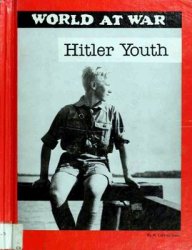Geography
Macedonia is landlocked by serbia and Montenegro to the north, by Bulgaria to the east, by Albania to the west, and by Greece to the south. it has an area of 9,928 square miles. Deep valleys, fertile steppes, mountains, and hills mark the terrain. The Rhodope Mountains lie to the east, where Mount Korab (9,068 feet), the republic’s highest peak, is found. The Babuna Mountains divide the Bitola plain in the south from the Skopje plain in the north. The Vardar River, the republic’s largest river, bisects the country. Principal lakes include the Doiran, Ohrid, and Prespa.
INCEPTION AS A NATION
When the Roman Empire was divided into the Western Roman Empire and the Eastern Roman Empire in the fourth century C. E., Macedonian lands fell under the rule of the Byzantines. Slavs settled the region around the seventh century,, and Bulgaria seized Macedonia from the Byzantines in the ninth century. Macedonia was restored to the Byzantine Empire in 1261 and then conquered by serbia in the 14th century. Ottoman Turks (see Turkics) invaded Macedonia and it fell under their control in the late 14th
MACEDONIANS:
NATIONALITY
Nation:
Former Yugoslav Republic of Macedonia (Republika Makedonija); FYROM; Macedonia (Makedonija)
Derivation of name:
From ancient Macedonians; possibly after the leader Makedon, "son of Zeus," or from the Greek make-dos or makednosfor "tall man"
Capital:
Skopje
Government:
Parliamentary democracy language:
Majority of the population speak Macedonian (Slavic); Albanian,
Turkish, and Serbo-Croatian are also spoken.
Religion:
Orthodox Christians make up about 70 percent of the population; about 30 percent are Muslim.
Earlier inhabitants:
Illyrians; Thracians; Macedonians; Greeks; Romans; Slavs; Bulgars; Byzantines; Turks
Demographics:
About 67 percent of the population are Macedonian Slavs; Albanians constitute about 23 percent; minorities include Turks, Rroma, Serbs, and Greeks.


This photograph shows a Macedonian family in 1900. (Library of Congress, Prints and Photographs Division [LC-USZ62-ii8864])
Century, remaining part of the empire for five centuries.
The Treaty of San Stefano, ending the Russo-Turkish War (1877-78), temporarily gave Macedonia to Bulgaria; Bulgaria, Serbia, and Greece all claimed ethnic rights to Macedonia. The treaty was nullified by the Congress of Berlin in 1878, again placing Macedonia under Ottoman control.
During the Balkan Wars (1912-13) Macedonia was split among Greece, Serbia, and Bulgaria. During World War II (1939-45) Bulgaria occupied Macedonia; the Bulgarian armistice treaty of 1944 established Macedonia’s prewar boundaries, confirmed in the 1947 peace treaty. By 1945 Macedonia became part of Yugoslavia, under the leadership of Josip Broz Tito, forming the People’s Republic of Macedonia, later known as the Socialist Republic of Macedonia. It declared itself an independent republic in 1992—becoming known as the Former Yugoslav Republic of Macedonia (FYROM).
CULTURAL IDENTITY
The cultural identity of the people of the Former Yugoslav Republic of Macedon (as opposed to peoples in the other parts of the region that comprises greater Macedonia) has been an issue of contention and confusion since the nation was formed in 1991, seceding from the former Yugoslavia. From the start the new republic aroused antagonism in Greece, which objected to its use of the name Macedonia, a Greek word, since the people of the FYROM are ethnically and linguistically Slavic. The proposed flag of the FYROM, which had the 16-pointed star of Vergina associated with Alexander the Great, further affronted the Greeks, since Alexander of the ancient Macedonians drew culturally from the Greeks. Nationalists among the Slavic Macedonians of the FYROM assert that when Slavs entered the region in the seventh century C. E., they became so closely intertwined with the natives (whom nationalist scholars have termed “Old Macedonians”) that they established a “biological compromise” in which a new ethnicity, which could claim the Old Macedonian heritage to be as much its own as its Slavic heritage, was born. Thus Slavo-Macedonian nationalists of the FYROM regularly claim as part of their cultural identity architectural and artistic artifacts from the classical Greek period and earlier.
Greeks resist this identification, since the most notable of the ancient remains in Macedonia (which the Slavo-Macedonians are claiming as part of their heritage) are stylistically Greek; the reason for this is that the kingdom of Macedon was founded by Perdiccas I, a Greek from Argos, and that the Macedonian kingly line, including Philip and Alexander the Great, descended from him. The Macedonian nobility was Greek, culturally at least, as their material culture demonstrates, and the culture of the native peoples of the region—Illyrians, Thracians, and those of other descent—who were peasant farmers, left less in the way of culturally identifiable remains. Greeks see the people of the FYROM as for the most part Slavic in ethnicity and believe that their claim to an Old Macedonian heritage is an attempt to co-opt what is essentially Greek. By the time Slavs entered the Macedonian region, this Greek culture was long gone, and the peoples with whom the Slavs joined and intermarried had little more claim to the Macedonian Greek heritage of classical and Hellenistic times than had the incoming Slavs.
Meanwhile the Albanian ethnic minority in the FYROM (themselves descended from the ancient Illyrians, who may have lived in the Balkans from as early as the late second mille-nium B. C.E.) began lobbying for more recognition, feeling that their minority status was preventing full participation in the country. When in 1995 Albanians tried to found an Albanian language university, the University of Tetovo, it was declared illegal by FYROM authorities because a state university cannot, under FYROM law, be established by private individuals outside state channels. Its founding caused clashes between police and demonstrators that resulted in the death of one Albanian. The university has since maintained a tenuous existence, holding classes in stores, private
MAGYARS
Location:
Western Russia, Hungary, and surrounding regions
Time period:
Fifth century to 1000 C. E.
Ancestry:
Finno-Ugrian; Turkic
Language:
Hungarian (Ugric)
Homes, and sometimes mosques. Albanians support the university by a voluntary tax.
The history of the FYROM thus far demonstrates how tenuous is the cultural identity of its Slavo-Macedonian majority, as the very existence of the nation has come under great threat by events in neighboring Bosnia, where SERBS, Croats, and Muslim Bosniaks (see Bosnians and herzogovinians: nationality) engaged in bloody and protracted civil war that caused thousands of refugees to flee to the FYRoM, and in Kosovo in the Federal Republic of Yugoslavia, where serbian authorities and Albanian separatists also engaged in armed struggle.
Further Reading
Derek R. Hall and Darrick Danta, eds. Reconstructing the Balkans: A Geography of the New Southeast Europe (New York: Wiley, 1996).
Robert D. Kaplan. Balkan Ghosts: A Journey through History (New York: St. Martin’s, 1993).
Mark Mazower. The Balkans: A Short History (New York: Random House, 2000).
Traian Stoianovich. Balkan Worlds: The First and Last Europe (Armonk, N. Y.: Sharpe, 1994).
Raymond Tanter and John Psarouthakis. Balancing in the Balkans (New York: St. Martin’s, 1999).




 World History
World History









